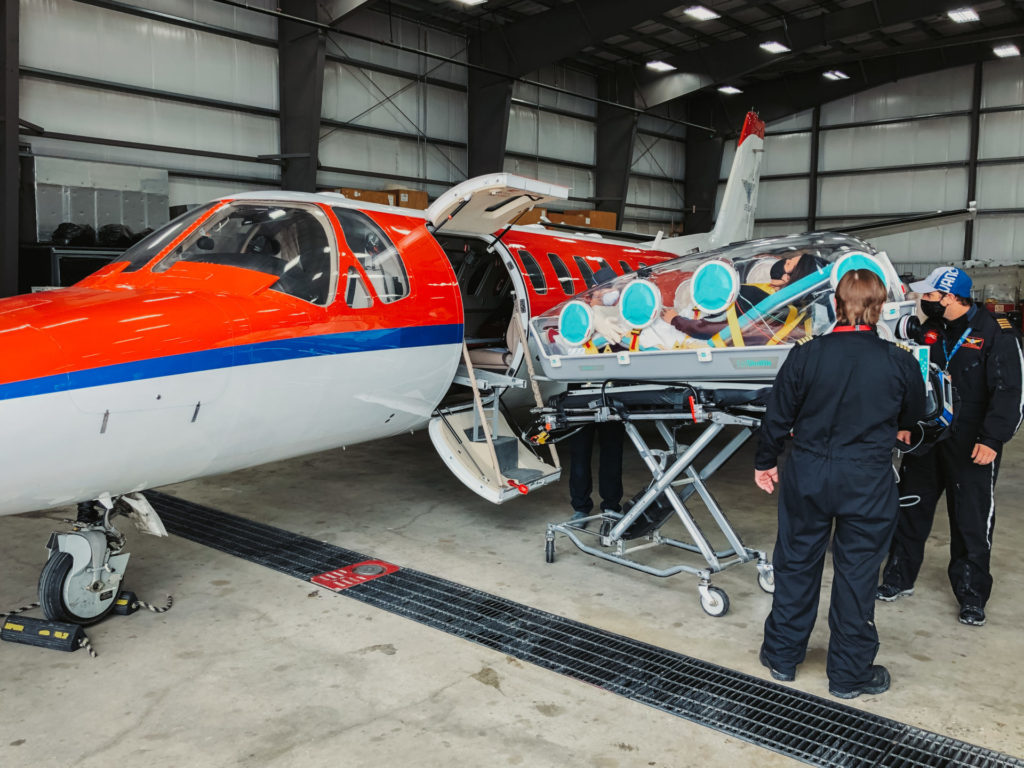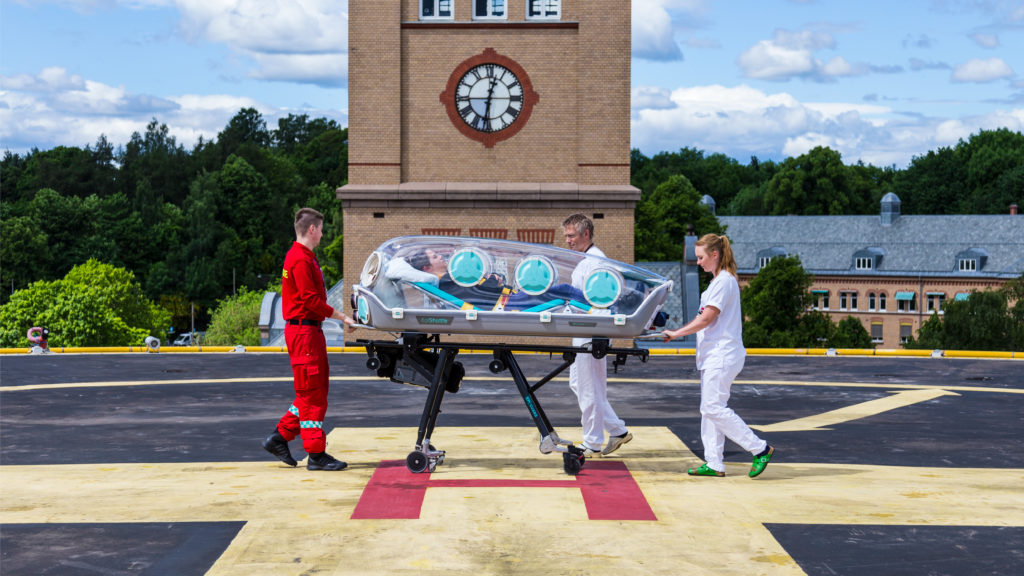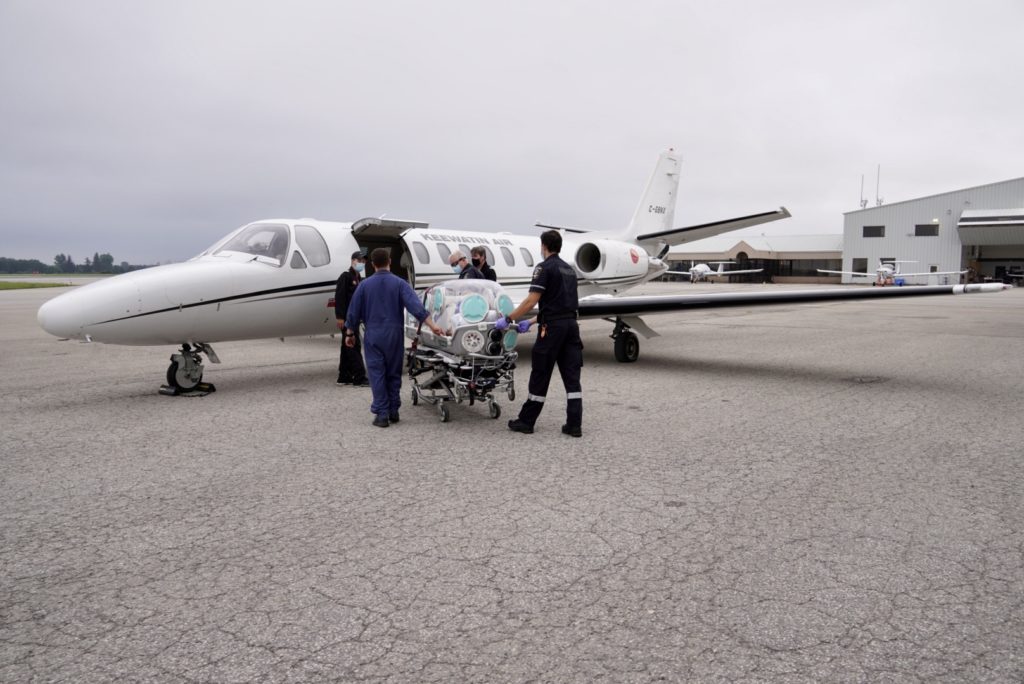Air Ambulance Medical Transport: Everything You Need to Know
Air ambulances play a vital role in emergency medical transport. They can provide rapid transport to care, improve access to care, and shorten transport times. They are an essential lifeline in critical situations, saving lives and improving patient outcomes.
In this blog we will take a deep dive into the definition and types of air ambulances, the medical personnel and equipment on board, the benefits they provide, and the future of this critical mode of transportation.
What is an Air Ambulance?
An air ambulance is a specialised vehicle used for medical transportation. When it comes to emergency situations and time-sensitive care, air ambulances play a vital role in swiftly transporting patients to healthcare facilities. The vehicles, including helicopters and fixed-wing aircraft, are designed to overcome obstacles and reach locations that may be impractical for conventional ground ambulances. They are equipped with medical personnel and advanced equipment to ensure the highest level of care during transport. The importance of air ambulances lies in their ability to provide rapid response and accessibility, particularly in remote or hard-to-reach areas.
Air ambulances are especially important for long-distance transfers and repatriation from foreign countries. As the future of medical transport continues to evolve, air ambulances will remain a critical component of emergency medical services.

What are the Benefits of Air Ambulances?
As previously mentioned, air ambulances offer numerous benefits, all with the primary objective of saving lives. While the list is not exhaustive, here are some key advantages:
Rapid Response
In emergency situations, every second counts. Air ambulances offer a swift response, allowing medical teams to reach patients quickly, even in remote or hard-to-access areas. This speed can be crucial in providing timely medical interventions and improving patient outcomes.
Accessibility
Air ambulances can reach locations that may be challenging for ground transportation, such as rural areas, mountains, or disaster-stricken regions. They transport patients from these remote locations to healthcare facilities, ensuring they receive the necessary medical care as soon as possible while providing treatment during transport.
Specialised Medical Care
Air ambulances are staffed with highly trained medical professionals, including paramedics, nurses, and doctors. These professionals are equipped with medical equipment and supplies to deliver medical care during transport. This level of expertise and resources can make a significant difference for patients with severe injuries or medical conditions.
Time-Sensitive Transport
For certain medical emergencies, time is of the essence. Air ambulances can quickly transport patients to specialized medical facilities, such as trauma centres or stroke centres, where they can receive care that may not be available in local hospitals. Quick transport can greatly impact the chances of survival and recovery.
Long-Distance Transport
Air ambulances are crucial for long-distance transports, especially when patients need to be moved between medical facilities or repatriated from foreign countries. Fixed-wing air ambulances provide the capability to transport patients over long distances efficiently, ensuring critical treatment and care throughout the journey.

What is Medical Transport?
Medical transport is the process of transporting patients to and from medical facilities. It can be done by ground ambulance, air ambulance, or a commercial flight with a medical escort.
There are many different reasons why a patient might need medical transport. Some patients may need transportation because they are unable to drive themselves due to a medical condition. Others may need transportation because they live in a rural area and do not have access to public transportation. Still others may need transportation to a specialised medical facility that is located far away from their home.
What are the Types of Air Ambulances?
Air ambulances are available in two primary forms: helicopter ambulances and fixed-wing ambulances. Helicopter ambulances are agile and well-suited for immediate response and accessing remote or inaccessible locations. They can land near healthcare facilities or directly on heliports. On the other hand, fixed-wing ambulances, typically medical jets, offer long-range capabilities, making them ideal for inter-facility transfers over longer distances. Both types of air ambulances are equipped with specialized medical equipment and personnel to provide intensive care to patients during transport. Fixed-wing air ambulances are larger and faster but require runways for landing, while rotary-wing air ambulances are smaller, slower, but capable of landing in more remote areas.
Medical Personnel and Equipment on Air Ambulances
Air ambulances are manned by a team of highly skilled medical professionals, including paramedics, nurses, and doctors, who possess the expertise to handle critical care scenarios. These dedicated individuals are equipped with a comprehensive range of specialized medical equipment and supplies, comparable to what is found in a hospital’s intensive care unit (ICU). This includes advanced life support systems, monitoring devices, and an extensive array of medical supplies and medications. With this extensive toolkit, the medical team is capable of monitoring and treating patients of all ages, with a wide variety of injuries or illnesses. They are even capable of simultaneously managing the care of two intensive care patients. This level of capability and preparedness ensures that patients receive optimal care throughout the duration of the transport.

Operational Considerations for Air Ambulances
When it comes to operating air ambulances, several crucial considerations come into play to ensure efficient and safe medical transport. These operational aspects are essential for seamless coordination and the delivery of timely, life-saving care. Let’s explore some key considerations:
Coordination with Ground Emergency Services
Effective communication and coordination between air ambulances and ground emergency services are vital. Clear lines of communication, including radio and telephone systems, are established to facilitate smooth information exchange. This coordination ensures that ground emergency services are aware of the air ambulance’s arrival, allowing for timely preparation and seamless patient handover upon landing.
Communication and Navigation systems
Air ambulances rely on sophisticated communication and navigation systems to maintain constant contact with ground control, medical facilities, and other aircraft. Advanced technology, such as satellite communication systems and GPS navigation, ensures real-time communication, accurate positioning, and efficient routing. These systems contribute to the overall safety and effectiveness of air ambulance operations.
Safety Protocols and Regulations
The safety of both patients and medical personnel is very important in air ambulance operations. Strict adherence to safety protocols and regulations minimize risks ensuring a safe journey. Air ambulance operators adhere to industry standards and guidelines set by aviation authorities, including routine maintenance and inspections of aircraft, medical equipment, and operational procedures. These measures help maintain the highest level of safety and operational readiness.
Maintenance and Inspections
Regular maintenance and inspections are essential to uphold the safety and reliability of air ambulance operations. Aircraft undergo scheduled maintenance and checks to ensure proper functioning of engines, avionics, and other critical systems. Medical equipment and life support systems are routinely inspected and tested to guarantee optimal performance during medical transport. These proactive measures help identify and address any potential issues, ensuring that air ambulances are in peak condition for emergency response.
Weather and Environmental Factors
Weather conditions and environmental factors can significantly impact air ambulance operations. Flight crews closely monitor weather forecasts and assess conditions before and during flights. Adverse weather conditions, such as strong winds, heavy rain, or fog, may require diversion or delay of the flight. Air ambulances must be prepared to operate in various environments, including rural or mountainous regions, ensuring safe access to remote and challenging locations.
Cross-border and International Operations
In cases where air ambulances need to cross borders or operate internationally, additional considerations come into play. Compliance with international aviation regulations, obtaining necessary permits and clearances, and ensuring smooth coordination with authorities in different jurisdictions are crucial. This enables air ambulances to seamlessly navigate legal and logistical aspects, facilitating the smooth transfer of patients across borders.
By carefully considering these operational factors, air ambulance services can maintain a high level of efficiency, safety, and effectiveness. The continuous evaluation and improvement of operational procedures contribute to the ongoing enhancement of air ambulance services, ensuring that patients receive timely and life-saving medical transport.

How much does Air Ambulance Service Cost?
The cost of air ambulance services can vary significantly depending on various factors. The distance of the transport, the type of aircraft used, the medical services required, and the specific provider. It is important to note that air ambulance services tend to be expensive due to the specialized nature of the service, their high operating costs, and presence of skilled medical professionals on board.
In the United States, the cost of an air ambulance transport can range from several thousand dollars to tens of thousands of dollars. The average cost for a short-distance rotary-wing transport is typically lower compared to a long-distance fixed-wing transport. If specialized medical equipment, advanced life support, or specialized medical teams are required, the cost may increase further.
Ultimately, the cost of air ambulance services should be considered in the context of the life-saving and critical care that they provide. In emergency situations, the swift transportation and specialised medical support offered by air ambulances can significantly impact patient outcome.
Success Stories of Air Ambulance Missions with the EpiShuttle
FAI Air Ambulance, specializing in long-haul patient transport, has been at the forefront of COVID-19 patient transfers. Since the beginning of the pandemic, they have successfully transported more than 300 COVID-19 patients, primarily using the EpiShuttle isolation unit. Volker Lemke, the Managing Director of FAI Air Ambulance, recognized the need for a secure transport solution early on and chose to acquire the EpiShuttle.
Initially deployed as a security measure for their pilots, the EpiShuttle ensured their safety and provided peace of mind during patient transports. As the pandemic progressed, the EpiShuttle’s advantages became evident to the entire staff. It alleviated the pressure on medical personnel, enabling them to forgo personal protective equipment (PPE) during long-haul flights. This reduced the risk of fatigue and potential errors, allowing them to engage in normal activities like eating, drinking, and communicating with each other. The medical staff greatly appreciated the ease and convenience the EpiShuttle brought to their work.
The EpiShuttle serves as a sealed barrier, separating infectious patients from their surroundings. This protective measure safeguards both the aircraft and the medical professionals. The EpiShuttle also allows for patient monitoring and full intensive care treatment, including emergency procedures such as intubation. Its cost-efficiency and ability to be disinfected for reuse make it a practical choice for air ambulance missions.
FAI Air Ambulance, renowned for their expertise in long-haul transport, primarily utilizes the EpiShuttle for intercontinental flights and missions. They have used the EpiShuttle for more than 80% of their COVID-19 patient transports, establishing themselves as a leader in the industry. This advantage has allowed them to remain operational and economically viable during the most challenging phases of the pandemic.
So why are Air Ambulances Vital in Medical Transportation?
Air ambulances play a critical role in emergency medical services, providing swift and efficient transportation for patients in need. With their ability to overcome obstacles and reach remote locations, air ambulances offer rapid response and accessibility that is often not feasible with ground transportation. The benefits of air ambulances include the ability to provide specialized medical care during transport, time-sensitive transfers to specialized medical facilities, and long-distance transfers, including repatriation from foreign countries. Equipped with highly trained medical professionals and advanced medical equipment, air ambulances ensure that patients receive the highest level of care throughout the journey. As the future of medical transport continues to evolve, air ambulances will remain a vital component in saving lives and providing critical care to those in need.